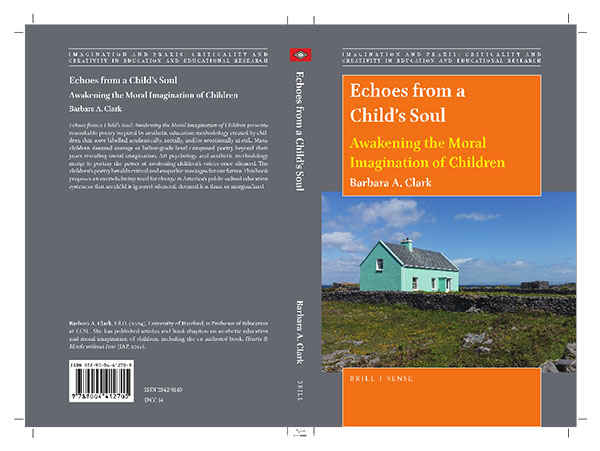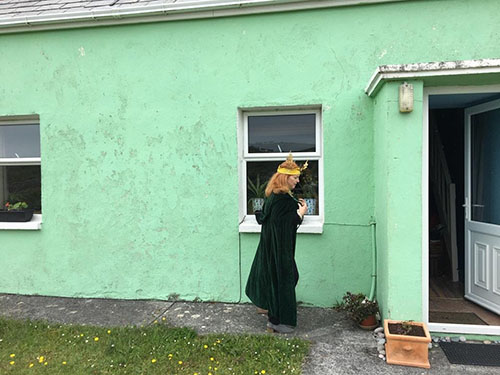
In a time of much uncertainty, fear and anxiety, Echoes from a Child’s Soul: Awakening the Moral Imagination of Children, presents remarkable poetry inspired by aesthetic education methodology created by children that were labeled academically, socially, and/or emotionally at-risk. Many children deemed average or below-grade level composed poetry beyond their years revealing moral imagination. Art psychology and aesthetic methodology merge to portray the power of awakening children’s voices once silenced and ignored in America’s public schools. The children’s poetry heralds critical and empathic messages for our future. This book proposes an overwhelming need for change in America’s public-school education system so that no child is ignored, silenced, deemed less than, or marginalized (Brill/Sense Publishers, Clark, 2020).
Meditation
Let us all pray for our children, for those we have lost to gun violence, abuse and neglect, both at home and throughout the world. And may the words of the children within this book weave a tapestry of love around your heart in hopes that all children discover what they are truly capable of, so that their dreams come full circle. [The following poem was composed by Emily at age nine] (Clark, 2020, p. 29).
The Enemy You Are to Yourself
The countless enemies that lurk
upon your total and complete destruction;
The loveless fools that are your enemies
And forever they will remain.
You are a loveless fool, a countless enemy of your own
And forever you will remain.
All the children represented in [Echoes from a Child’s Soul] experienced a type of metamorphosis as their inner world was revealed to be empathic towards others and full of hope to survive in a harsh world. The more they related to the characters in the paintings, both intrapersonal and interpersonal awareness evolved as descriptive and figurative language increased. More importantly, the children began to see themselves and others in new ways while gaining confidence as writers. They had important messages for adults; to love now, for your loved one may not be around tomorrow, to forgive, and not judge one another. I believe these messages, formed within the innocent soul of the child, not yet hardened, must be dignified and held within our hearts in order to sincerely and thoughtfully examine what is critical for our children in America’s public schools. We cannot risk losing one more child.
The arts are more marginalized than ever before. Curriculum is scripted and the democratic arena of education promoting freedom of ideas and possibilities diminished. Preventing the integration of the arts and aesthetics within curriculum is excluding pathways for children to learn. Each and every child is unique and comes to school with different experiences. Why are we not cherishing what each child has to offer? All school curricula must be examined and questioned, after all, what is the purpose of a democratic education? The human life thrives with love, hope, and forgiveness. The children’s voices are telling us that in the following pages (Clark, p. xi).
Children are our messengers for the 21st century. We must begin to see and hear them in new ways. We have to go back to our 20th century ideas and look at the whole child once again, lest we lose our children completely to mass media and marketing, in which their minds become numb. Moral imagination and love for each other ceases to exist. As humans we were created to create, to love, and to grow; why then are these ideals excluded in our public schools?
One final note is in regard to the Epilogue (see Chapter 7). In 2014, during a research sabbatical, I traveled to Ireland to the remote Aran Island of Inis Mòr. I was curious to learn more about my Irish ancestors and the Celtic imagination. When first meeting the island children, I knew that this community was raising their children in the most distinct and compassionate way. The Irish children’s imaginative and instantaneous style to express ideas made me wonder what we have lost here in America. I have returned to Inis Mòr over the past five years with my colleague Dr. James French to study these ideas of arts and aesthetics deeply ingrained in the daily island life and culture. More research is to come (Clark, 2020, pps. xi-xii).

Contemplating artistic & aesthetic possibility outside the Green House,
Inis Mòr, Ireland (2019)